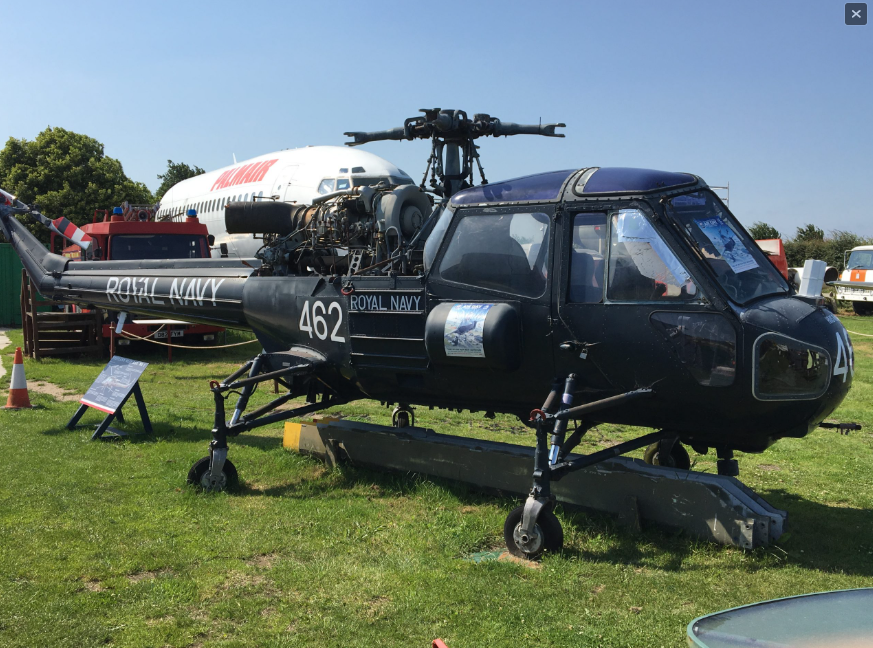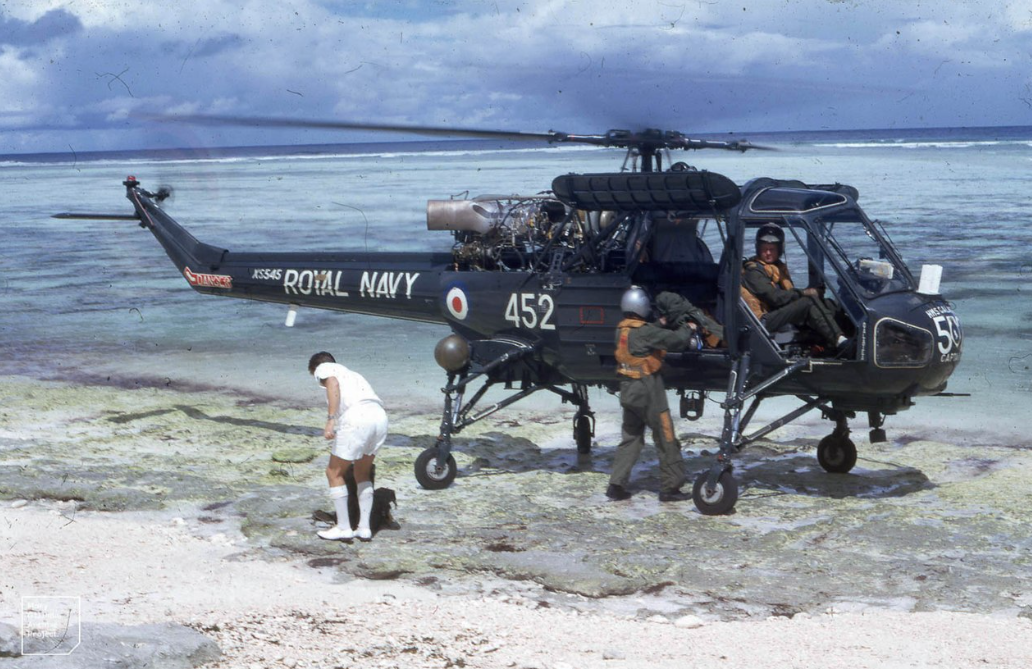
Westland Wessex
History & Development
-
The Wessex was developed under licence from the Sikorsky S‑58 (a piston‑engine helicopter) but significantly modified by Westland with turbine engines (Napier Gazelle / Bristol Siddeley Gnome) for better performance.
-
First flight: 20 June 1958; entered service in 1961.
-
Many variants were built: ASW (anti‑submarine warfare), SAR (search and rescue), troop transport, VIP versions, etc.
Roles & Operational Use
-
Primary user: Royal Navy, and later the Royal Air Force. Also used by the Royal Australian Navy and others.
-
Tasks included: anti‑submarine warfare (carrying torpedoes, sonar, depth charges), search and rescue missions, troop transport, utility duties, and VVIP transport.
-
It served for over 40 years in British service; retired from UK service in 2003.
Technical Features & Performance
| Spec | Wessex HC.2 / typical |
|---|---|
| Crew | Two pilots; plus observer / crew depending on role (ASW, SAR, transport) |
| Rotor diameter | ~17.07 m (56 ft) |
| Length | ~20.07 m |
| Max speed | ~132 mph (212 km/h) |
| Range | ~300‑500 km depending on fuel, variant, aux tanks |
| Capacity | ~16 troops; or alternatively stretchers, external load; can carry underslung loads. |
Notable Contributions & Legacy
-
It was among the first British helicopters with turbine (gas turbine) power instead of piston engines, boosting performance, reliability, and payload.
-
Wessex played vital roles in conflicts and operations: Falklands War, various naval operations, search and rescue, maritime patrol.
-
Many preserved examples are on display in museums around the world.

Westland Wasp
History & Role
-
The Westland Wasp (HAS.Mk I etc.) was a light shipboard helicopter, developed in the 1960s for the Royal Navy.
-
It was designed to operate from small warships and frigates, bringing anti‑submarine warfare (ASW) capability to smaller naval vessels.
Key Design Features
-
Light, compact airframe with foldable rotor blades and tail boom to stow aboard small ships.
-
Undercarriage: four wheeled castering wheels to facilitate movement on small flight decks. The wheels helped in handling on pitching ships.
-
Single turboshaft engine; modest payloads, capable of carrying small torpedoes or depth charges.
Performance & Operational Use
-
Maximum speed ~193 km/h (120 mph); range around 488 km (303 miles) depending on fuel and load.
-
Ceiling ~3,720 m; crew typically two (pilot + aircrewman). Some versions could carry 3 passengers or use stretcher in cabin.
-
Used in ASW, surface patrols, casualty evacuation, transport of small loads, utility roles. Not carrying sonar itself in many versions; it depended on parent ship’s sensors.
Notable Operators & Legacy
-
Operated by Royal Navy, and exported to Indonesia, Malaysia, the Netherlands, Brazil, New Zealand, South Africa.
-
It saw action during Falklands War, and small conflict actions where naval helicopters were essential.
Westland Lynx
History & Role
-
Designed as a replacement for Westland’s older helicopters (Scout & Wasp) in the late 1960s. First flight in 1971.
-
Multi-purpose battlefield helicopter, serving both land and naval forces. Some variants specialize in anti-submarine warfare, anti-surface warfare, transport, search & rescue, reconnaissance.
Design Highlights & Performance
-
Twin-engine (Rolls‑Royce Gem in earlier, later versions used LHTEC CTS800 etc.) giving improved power, hot/high performance.
-
Composite rotor blades, BERP rotor technology in later versions for improved speed, reduced vibration.
-
Excellent manoeuvrability: capable of aerobatic flight (loops, rolls) in certain display team variants.
Specifications & Capability
-
Rotor diameter ~12.80 m (42 ft).
-
Max take‑off weight in many versions around 5,000‑5,300 kg.
-
Speed: cruise and top speeds vary by variant; naval versions (HAS etc.) have certain performance, the Super Lynx etc. reach higher speeds.
-
Armament: depending on role, can carry anti-ship missiles (Sea Skua), torpedoes, depth charges, machine guns, rockets. Also sensor suites, radar, sonar for naval versions.
Service & Legacy
-
Used by British Army, Royal Navy, and many export customers.
-
Variants include Lynx HAS (naval), Super Lynx, Wildcat (as further development).
-
Set a speed record (using BERP blades) in the 1980s that stood for long time.
Comparison & Key Takeaways
Here’s a side‑by‑side comparison to understand where each shines:
| Feature / Role | Wessex | Wasp | Lynx |
|---|---|---|---|
| Era of introduction | late 1950s / early 1960s | early 1960s | 1970s and later |
| Primary mission | Naval ASW, SAR, transport, utility | Small shipboard ASW, utility, patrol | Multi‑role, land & sea; ASW / anti‑surface / reconnaissance / transport |
| Engine layout | Twin turbine (in later variants) | Single engine | Twin engines (earlier / later more powerful) |
| Size and Payload | Larger, able to carry troops, external loads, stretchers | Smaller, lighter payloads | Medium sized, more payload & flexibility |
| Rotor features | Foldable blades for naval stowage | Foldable blades, tail boom; compact for ship deck | Advanced rotor tech (e.g. BERP blades) |
| Operators & Service Life | Long service in UK & export; retired UK in 2003 | Served on smaller ships, exported, retired | Many are still in service or replaced gradually by updated variants |
SEO Keywords & Metadata Suggestions
To help this article rank well:
Keywords to use:
-
Westland Wessex helicopter specifications
-
Westland Wasp role and features
-
Westland Lynx history & performance
-
British naval helicopters Wessex, Wasp, Lynx
-
Multi‑role military helicopter Lynx capabilities
-
Wessex search and rescue operations
-
Wasp shipboard ASW helicopter
-
Evolution of Westland helicopters
Meta Description Suggestion:
“Explore the history, design, and capabilities of the Westland Wessex, Wasp, and Lynx helicopters—key British multi-role rotorcraft used in ASW, SAR, transport, and more.”
Conclusion
The Westland Wessex, Wasp, and Lynx helicopters together represent a lineage of British rotary‑wing innovation. Each brought something unique:
-
The Wessex introduced turbine power in large naval/utility helicopters, with strong capabilities in ASW, transport, and rescue.
-
The Wasp made naval helicopter operations possible even from small decks with its compact, agile form and folding features.
-
The Lynx, with its twin‑engine power, composite rotors, and flexible mission roles, has been among the most versatile military helicopters in service.
Though newer helicopters (like the AW159 Wildcat) replace or modernize these capabilities, the heritage and impact of Wessex, Wasp, and Lynx remain strong. For enthusiasts or military aviation students, these helicopters are excellent case studies in design trade‑offs, mission versatility, and how evolving technology meets military requirements.

You must be logged in to post a comment.